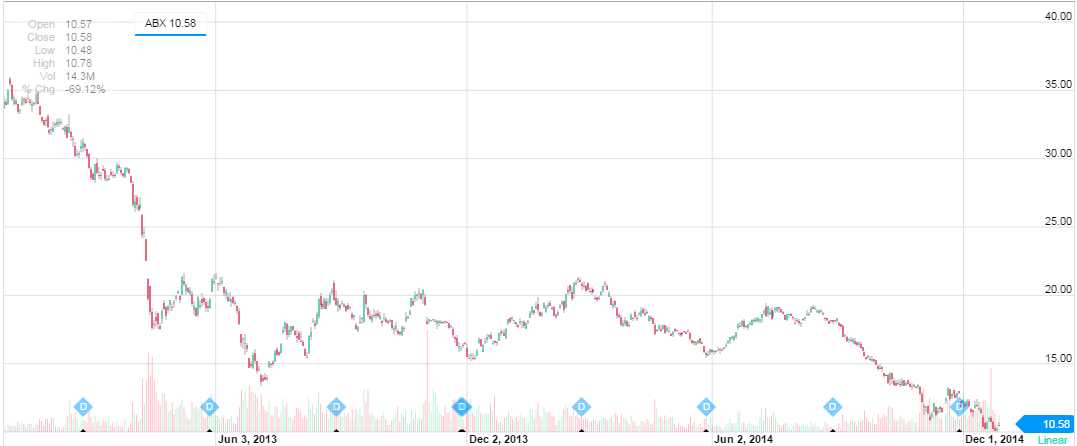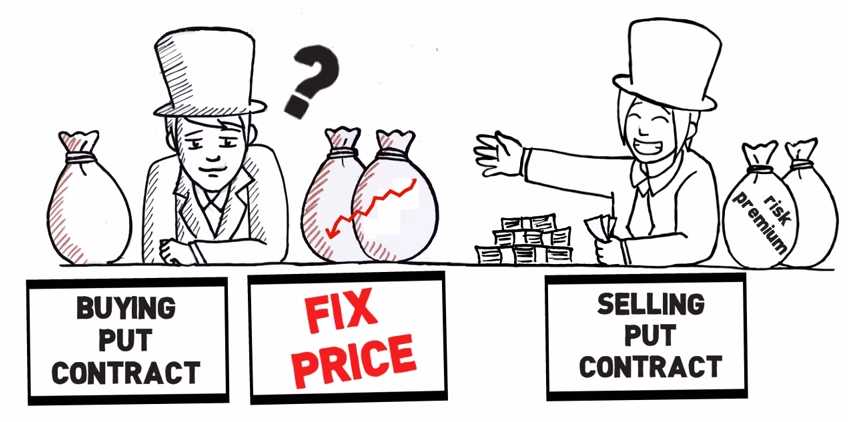Using Options To Pay Yourself Monthly Dividends Up To 10%
 Sometimes we forget the basics.
Sometimes we forget the basics.
In our video series, there's a lesson called "The Secret to Consistent 20-40% Annual Returns on Stocks" and I hope you've seen it. While the low implied volatility of the market has made it a rough year for option selling, we were still able to scratch out just under 30% profits in our long and short-term portfolios. We also cashed out out Income Portfolio with a 20% profit earlier in the year and we did it by following the BASIC strategies we teach at Philstockworld, not by gambling!
Not that we're adverse to gambling, gambling is fun – but fun means fun, which means it's a small part of our total investing portfolio while the vast bulk of our money is SENSIBLY INVESTED in safer strategies that are designed to grind out consistently good returns over many years. Two weeks ago we discussed the long-term advantages of compounding annual growth in "How to Get Rich Slowly" and now we'll begin discussing some basic strategies that can generate those consistent annual returns.
In the "7 Steps" video, we're discussing a basic covered call strategy and we delve into the Fundamentals of stock selection. At the time (Sept 2013), we were using ABX, which was trading at $19.15 and we sold the November $19 calls (45 days out) for $1.30. The simple instructions were to wash, rinse and repeat to make up to 40% a year by simply selling calls against the stock.

As you can see, ABX has dropped to $10.58 since then, down about 40% BUT, had you followed through and kept selling calls, we had a lovely 12-month period in which it stayed in our range and that would have given us 8 opportunities to collect at least $1 for $8 back before the stock turned down in September of this year. That would have dropped the net outlay below $10 and stopping out at $15 would have been a 50% gain for the year – even as the stock dropped 22% (from $19.15 to $15).
 You can't get more basic than that – just mindlessly selling covered calls every month or two and, even when the stock ends up being a dog – 50% returns! There's nothing fancy here other than our selection of a range-bound stock which, of course, we stop playing when it falls out of our range.
You can't get more basic than that – just mindlessly selling covered calls every month or two and, even when the stock ends up being a dog – 50% returns! There's nothing fancy here other than our selection of a range-bound stock which, of course, we stop playing when it falls out of our range.
ANYONE can learn how to trade this way (and we go over all the strategies in our book, of course) yet, unfortunately, a lot of traders tend to FORGET how EASY it is to make money by just sticking to the basics.
As with the Dark Side, it is easy to be seduced by the allure of quick and "easy" money using options for leverage and trying to beat the market for a big win based on some "tip" you got, be it from a friend or a guy on TV or even someone like me. THAT'S GAMBLING!!!
Never forget that that's gambling and you will be OK. Gambling is NOT investing. Investing is what we should be doing with the vast bulk of our equity assets – gambling is not! See our series on Smart Portfolio Management, which has examples for $10,000, $100,000 and $1M+ portfolios. We demonstrate a lot of these trades for our Members during the year using 4 virtual portfolios with various sizes and trading styles.
 BUT, as I said above, sometimes we just forget the basics – the reason we love options in the first place. We can sell a put to give ourselves a discounted entry on a stock and we can sell a call to pay ourselves a dividend. Year after year we demonstrate how these techniques can give you those consistent 20-40% annual returns WITHOUT taking huge risks and this coming year, our concentration is going to be on having our Members EMBRACE those long-term wealth building strategies.
BUT, as I said above, sometimes we just forget the basics – the reason we love options in the first place. We can sell a put to give ourselves a discounted entry on a stock and we can sell a call to pay ourselves a dividend. Year after year we demonstrate how these techniques can give you those consistent 20-40% annual returns WITHOUT taking huge risks and this coming year, our concentration is going to be on having our Members EMBRACE those long-term wealth building strategies.
If you believe investing is gambling, then you are doing it wrong and, if you believe investing is gambling – you are more likely to take the kind of risks that ARE gambling, which will then reinforce your misguided view that investing is gambling – get it?
There is no gambling in buying ABX TODAY, for $10.58 and selling the Feb $10 calls for $1.15. Your net entry is $9.43 and, on Feb 20th (55 days), you will either be called away at $10 with a 0.57 profit (6%) if the stock is above $10 or, if ABX is below $10, you will own the stock for net $9.43 (a 10.8% discount) – at which point you will wash, rinse and repeat the trade by selling the April $9s for $1 or so.
This is not an options class so I won't get into all the what-ifs down the road. Suffice to say you can repeat the performance that gave us 50% on ABX last year with very little risk. Now, our Members know there are fancier ways to go, so let's pick another example and see if we can make it more interesting than 6% in 55 days.
Remember, we want to find stocks that are likely to stay in a channel. Stocks that have decent volatility day to day (to boost the price of the options we sell) but are not too likely to stray from a trading range of maybe 20% up or down. WMT comes to mind, MCD, VZ, T, F… Blue chips are good when you are beginning, as they are less likely to go to zero.
 We'll start with Ford (F), because F is only $15.45 a share so anyone can play with it. Option contracts trade in 100-share blocks so SELLING the 2017 $13 put for $1.40 obligates you to buy 100 shares of F for $13 ($1,300) and puts $140 in your pocket right away. That nets you into the stock for $11.60, which is giving yourself a quick 25% discount.
We'll start with Ford (F), because F is only $15.45 a share so anyone can play with it. Option contracts trade in 100-share blocks so SELLING the 2017 $13 put for $1.40 obligates you to buy 100 shares of F for $13 ($1,300) and puts $140 in your pocket right away. That nets you into the stock for $11.60, which is giving yourself a quick 25% discount.
You can then conservatively buy 100 shares the stock for $15.45 ($1,545) as well and that would put you in at a net of $14.05 a share and, if F goes below $13 and the 100 shares are assigned to you, then you end up with 200 shares at an average of $13.525 ($2,750) – that's your maximum risk on the trade. Now you can sell the Feb $15 calls for 0.83, puting another $83 in your pocket so the total cash outlay drops to $1,322.
If you are called away in Feb at $15, you get paid $15 in cash, keep the $83 and the $140 from selling the puts and you are left with just the obligation to buy 100 shares again at $13 (if the stock goes below that price by Jan 2017). That turns you initial net $1,322 into $1,583 (+$261 or 19.7%) in 55 days. If you do end up having to buy 100 shares of F in 2017 for $1,300, the $261 you made reduces your net cost to just $1,039 or $10.39 per share – 33% off the current price!
So clearly there is no reason to fear the upside and the downside is F goes lower and you keep the $261 you've collected and, in Feb, you sell another call for another 0.80 and now you have $341 in your pocket for April and $421 in June and $501 in August and $581 in October and $661 next December. A year from now – if you are NOT called away with more than a 20% profit, you will have $661 in cash and the F stock you bought for $1,545 and that's net $884 on your first 100 shares + $13 for the next 100 would be $2,184 for 2,000 shares or $10.92 per share.
 Of course, if F is lower than $10.92 (down 30%) in a year, you do lose money. As I often say to our Members, these are not magic beans – there is some risk, BUT – by intelligently managing our risk, we have a much more likely upside than downside and MOST of the time, we can make some very nice returns.
Of course, if F is lower than $10.92 (down 30%) in a year, you do lose money. As I often say to our Members, these are not magic beans – there is some risk, BUT – by intelligently managing our risk, we have a much more likely upside than downside and MOST of the time, we can make some very nice returns.
Now, there's a fancier way to play F and that's what we call an ARTIFICIAL buy/write where, instead of owning the stock (which pays a nice 3.3%, 0.50 dividend), we instead buy the 2017 $15/20 bull call spread for $1.45, selling the same $13 puts for $1.40. That drops our net cash outlay to just a nickel and we're only obligated to buy 100 shares for net $13.05 ($1,305) but we can STILL sell those calls.
more



